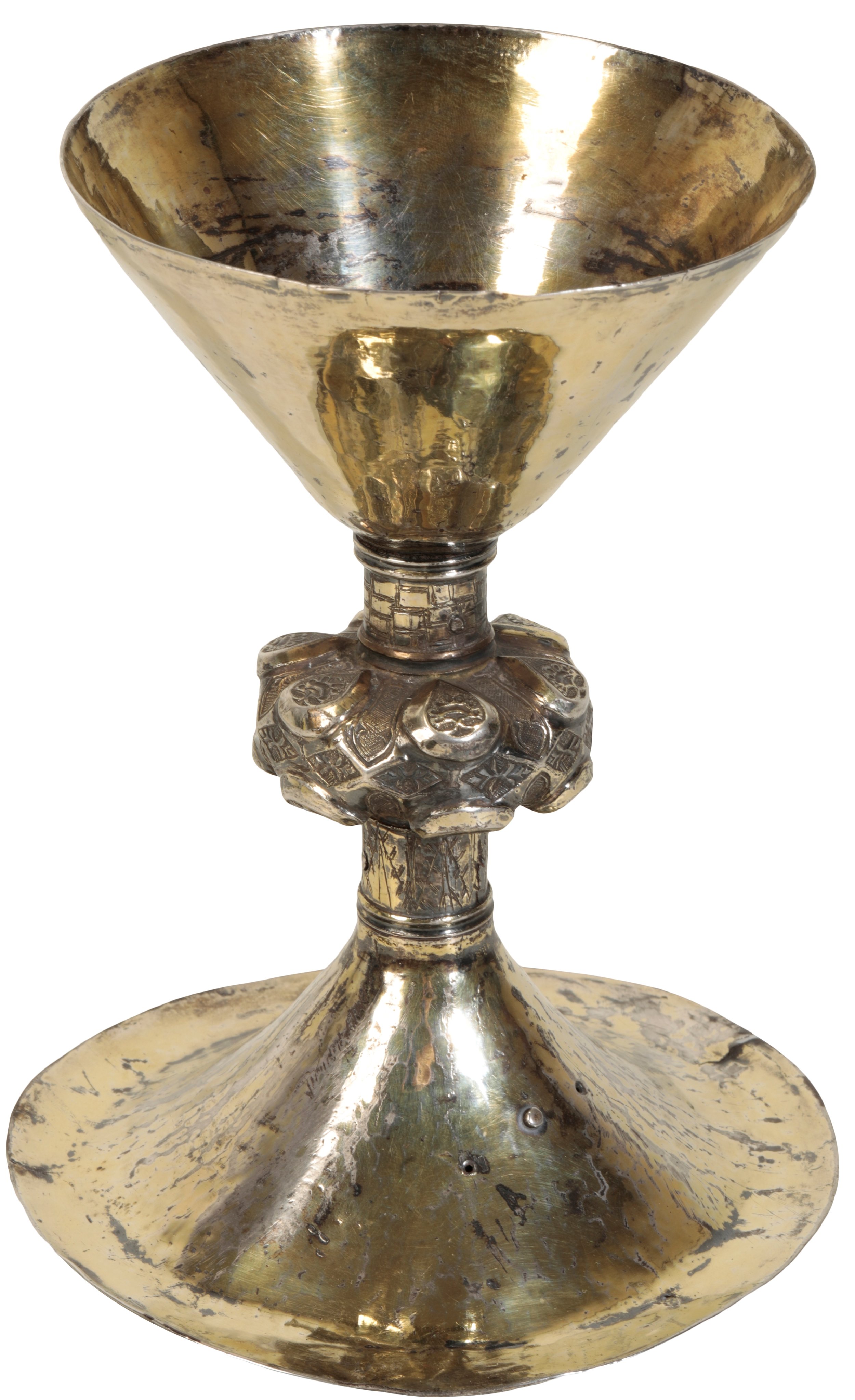Here is another guest article by my friend, Andrew Marlborough, a 6th-year seminarian studying at Allen Hall in London, and who worked in the art gallery business for 10 years before joining seminary in England.
Andrew writes:
Three historic chalices that appeared at auction in the UK recently deserve special mention. Although quite different, they stand as a united witness to the survival of Catholic faith under persecution. This witness is sorely needed today in the current troubled times for the Church and the world. And it is amplified all the more by the fact that these remarkable vessels have contained the Precious Blood of the Son of God Himself, our High Priest and Victim, whose sacrificial love is the very bedrock of our faith.
The oldest example was an exceptionally rare late 15th-century Irish silver-gilt chalice, sold by Duke’s in Dorset on 1st July 2021 for £48,000.
Although made just before the Reformation, its survival through the period is remarkable, given the widespread destruction of Catholic culture at the time. Its plain conical-form bowl, ornate knop, and overall appearance reflect a clear late-medieval style. The chalice belongs to a small group of related pre-Reformation vessels, such as the Matheus Macraith chalice at Clonfert Cathedral in Galway, and the De Burgo O’Malley and Kirwan chalices in the National Museum of Ireland. The auctioneer’s description noted that the Museum of Ireland suggested it may have been made in the Cork area. This handsome and rare chalice was bought by an Irish foundation which will loan it for public exhibition, starting this March with the exhibition, ‘Thirst for the Divine’ at Villanova University in the US. It is also a joy to report that he hopes it will be used occasionally in the Holy Sacrifice of the Mass. This is surely a great example for other collectors to follow.
The second was an historic silver chalice sold by Sotheby’s London on 3rd August 2020 for £20,000.
It was another Irish provincial example, but this time from the mid-17th century recusant period, and of documentary importance. Its elegant profile results from the characteristically tall hexagonal spreading foot found on other surviving chalices from this period, and from the Baroque style tulip-form bowl. The foot bears an engraved Crucifix, surrounded by instruments of the Passion, and a memento mori motif. The great historical significance of the chalice derives from an inscription on the base reading:
This chalice was made for Terlagh O Briene and Ellinorie Briene of Comoragh the 26th of October 1643.
This places it right at the start of the Irish Confederate Wars between Catholic landowners and the English administration under Charles I. Not too much is known about Terlagh and his wife Ellinorie but their son Derby O’Brien was taken prisoner and died in captivity in 1656, and four of his sons were later hanged by Cromwell’s men for defending their estate. This important chalice, a tangible expression of Catholic endurance under persecution, was bought by the Australian Catholic University for display in its art collection.
Finally, a very fine and rare Polish mid-17th century Baroque style silver-gilt chalice was sold by Tenants Auctioneers in Yorkshire on 13th November last year for £6,500.
Although dated 1652 and from almost the same date as the Terlagh O’Briene example above, it was of finer craftsmanship and more ornately decorated, revealing the different cultural context in which it was made. This quality, combined with the rarity of surviving Polish chalices from the period make it good value. So much Polish Church plate was destroyed or looted over the years of the country’s traumatic history. The ornate base is mounted with garnets, but the most interesting and beautiful part of the chalice is the central knop cast with three angels. The auctioneer’s description noted that the vessel had been used at St Anne’s Orthodox Monastery in York. It would be fascinating to know the story of how it survived the centuries and ended up there.





